Wondering how long the food you dry at home will keep for? This comprehensive guide to everything there is to know about dehydrated food shares all the answers you need, including how long dehydrated food lasts.
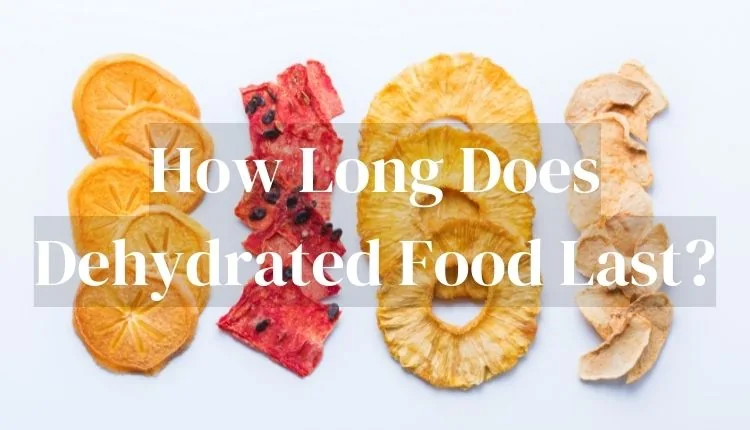
Dehydrating your food at home is a great way to save a buck while still enjoying great flavors and plenty of nutrients.
However, to truly make the most of your food, you need to know how long it lasts. See, there’s no straight or standard time for all the foods you dehydrate.
We’ve shared a detailed guide to the longevity of foods you can dehydrate at home. In addition to the duration each food lasts, you will also find an in-depth outline of factors affecting how long home-dried food will last.
How Long Does Dehydrated Food Last?
Dehydrated food prepared, conditioned, and stored the right way should last you anywhere between a year and two years.
Furthermore, dehydrated food transformed into dried powders typically lasts about six to nine months. But, this is just a standard timeline for most foods because different types of food have their own estimated shelf lives.
Here’s how long different dehydrated foods will last on your shelf at home:
Dehydrated Fruits
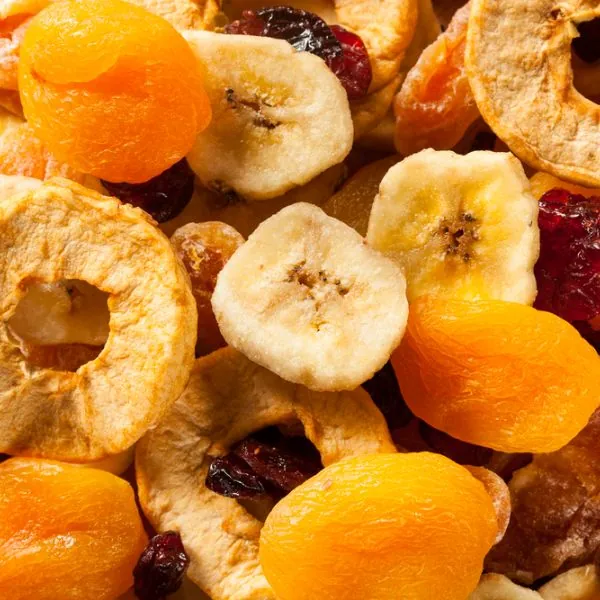
Dried fruits will last you anywhere between four months and one year. However, to enhance their longevity, you have to condition the fruits after the dehydration process to distribute the moisture among the fruits.
Dehydrated Vegetables
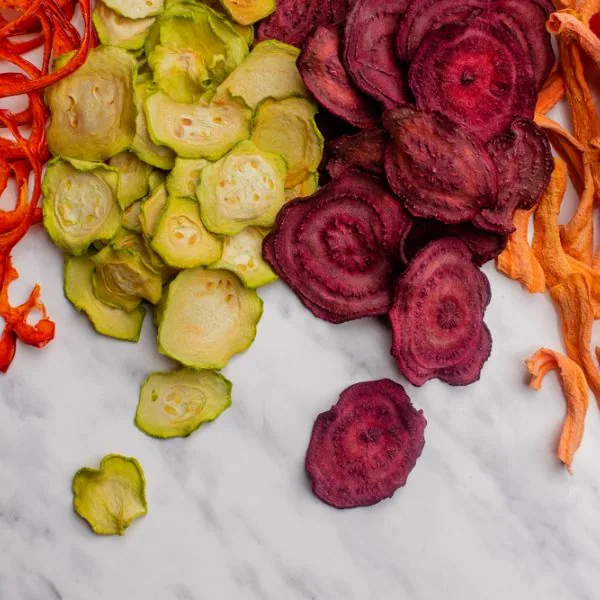
Dried fruits will last you slightly longer than fruits, lasting you up to eight to ten years later. But, oxygen plays a significant role in reducing the shelf life of dried vegetables.
So, you want to remove moisture and cool the veggies completely before packing them.
Dehydrated Meat
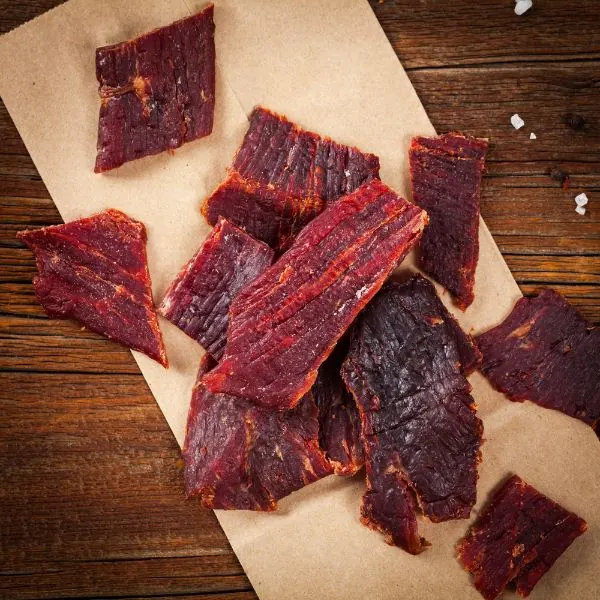
Meat or chicken dried at home will not be the same as store-bought jerky that packs numerous preservatives. Therefore, it will have a much shorter shelf life, typically about a month to two months dried.
You may have to re-dehydrate your meat sometimes if you notice moisture build-up (before mold forms). But, the food storage matters too.
If not stored in airtight or vacuum-sealed packaging, you may have to finish up your entire jerky in just a week or two.
Dehydrated Mushrooms
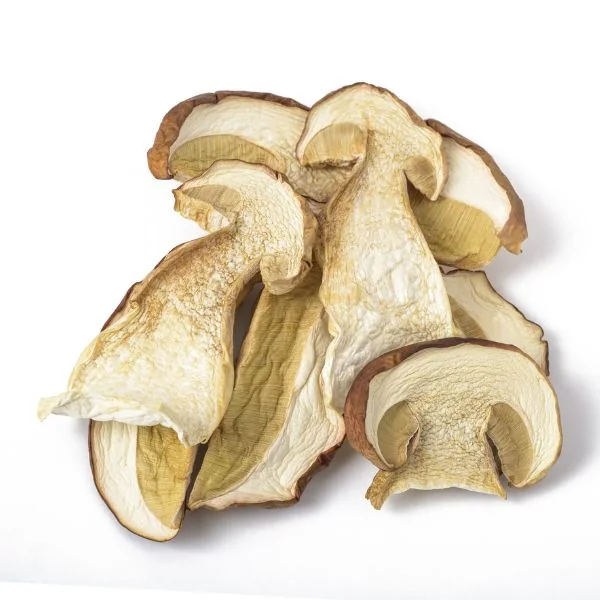
Home-dried mushrooms last up to a year. The best part of drying most mushroom varieties is they don’t really have special reservations when it comes to storage.
However, they tend to lose their nutrients over time. So, when stored in the right conditions in an airtight or sealed packaging, mushrooms can last for more than a year.
Dehydrated Herbs and Spices
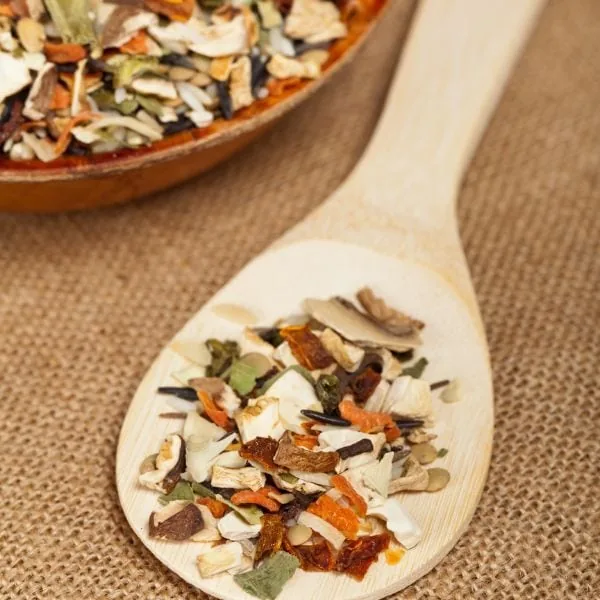
Home dried herbs will last you about six months, particularly in powder form. Dried brittle herbs will last longer than powdered dry herbs.
However, some herbs can last you up to three years, depending on the part and plant you dry. Dried roots can last for two to three years while leaves and seeds go for up to a year.
But, the durations outlined above vary based on how you prepare and dry the foods. In fact, with stellar prep and dehydrating techniques (sometimes adding preservatives), home-dried food can last for up to five years.
You also have to consider the characteristics of the food you prepare.
For example, tomatoes don’t last as long as foods like potatoes due to their texture, color, and even the quickness at which they lose flavor. However, blanching them before drying can extend their longevity further.
On the other hand, powdered dried food will not last as long as solid food as the majority of its surface area is dried and powdered. This state helps to further expose them to air, heat, moisture, and light, significantly reducing their shelf life.
Factors Affecting the Longevity of Dehydrated Food
Several factors affect how long food you dehydrate lasts. Therefore, when fine-tuned, you can achieve a longer shelf life for your food.
Here are the factors to consider:
Type of Dehydrator Used
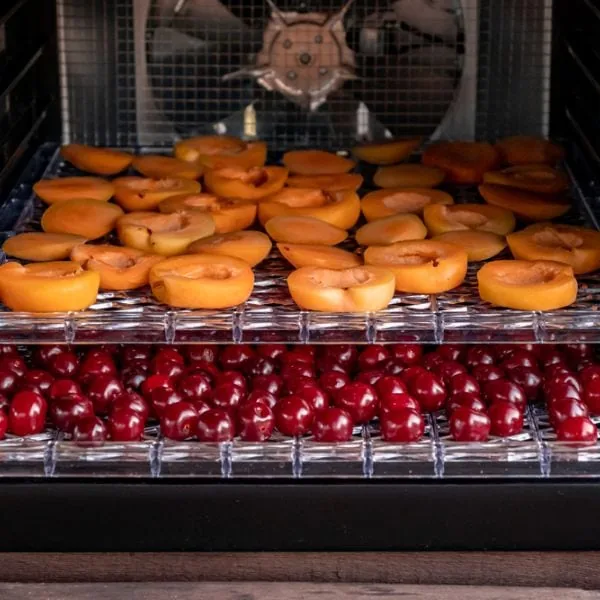
Unbeknownst to many people, the type of dehydrator you use to dry your food at home significantly affects its longevity. So, you want to pick the right machine for your particular needs, especially if you plan to dry different types of foods.
Some of the features to look out for include:
- Adjustable temperature controls: This is an important feature as it allows you to set the dehydrator to the ideal temperature needed for the food item you are drying.
- Dehydrator style: Stackable dehydrators feature top or bottom fans and heaters, which blow air up or down through the stack of vertical trays. While they are the cheapest option, they may result in uneven drying. So, to reduce uneven drying, you have to shuffle trays from time to time. On the other hand, front-loading dehydrators tend to have fans and heaters in the back, allowing for a more even and horizontal airflow. This makes front-loaders more efficient as they promote even heating.
- Capacity: The amount of food you dehydrate affects the drying duration and doneness. So, if you have large food capacity needs, you need a dehydrator with a higher drying capacity. For standard uses, a smaller dehydrator will do. Stackable dehydrators prove to be great for home use due to their versatility. You can always switch up, add, and remove trays, depending on the batch and type of food you dehydrate.
Type of Food Dehydrated
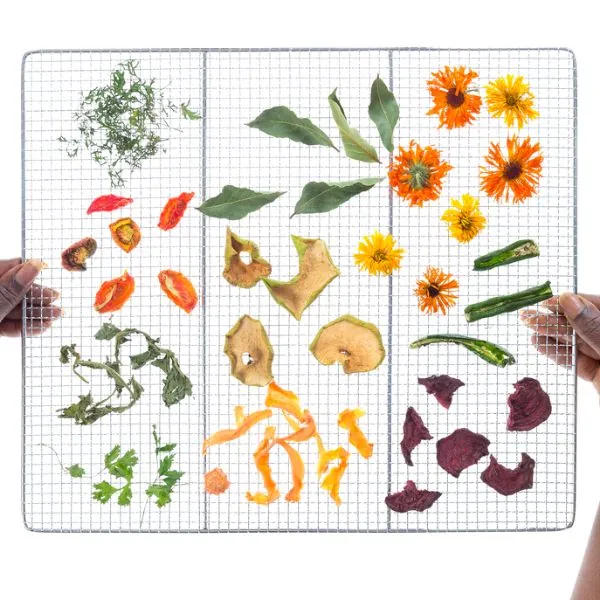
The type of food you dehydrate also affects the shelf life, as mentioned above.
Foods like fruits, vegetables, herbs, legumes, grains, rice, pasta, and low-fat meat do relatively well and last longer. However, some foods don’t do really well when dried.
Food that is high in fat or oils, like nut butter, avocadoes, or olives, don’t do so well as they retain moisture. The same applies to high-fat meats.
After all, fats do not evaporate. This means that they will quickly spoil or go rancid within a few days.
Other foods like dairy and eggs don’t only have a very short shelf life. They also carry a high risk of contamination and food positioning, making them unsafe for home dehydration.
Similarly, you want to stay away from store-bought semi-complete foods and condiments since they may contain ingredients like fats, dairy, and eggs.
Meal vs Ingredients
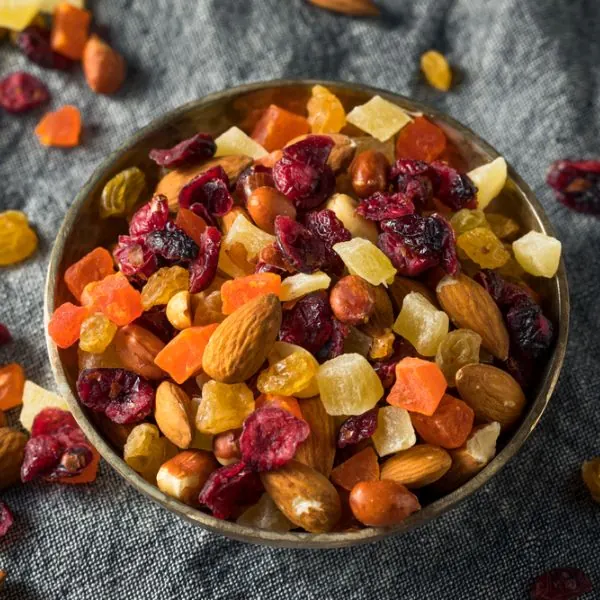
Now, this part is important for people who want to prepare full meals for backpacking, camping, hiking, or emergency purposes. You will find yourself drying different food items to suffice the components needed for a particular meal.
Now, the important part of putting together the right meal is choosing ingredients that maintain more or less the same drying temperature needs. Doing so prevents some ingredients from hardening and others from being under-dried.
Further, this helps to give your dish a longer shelf life. Similarly, you want to avoid adding fats or dairy to dehydrated foods to prolong their shelf life.
Instead, you can incorporate fresh or store-bought dried dairy and fats during the rehydration process when you are ready to eat.
Prep
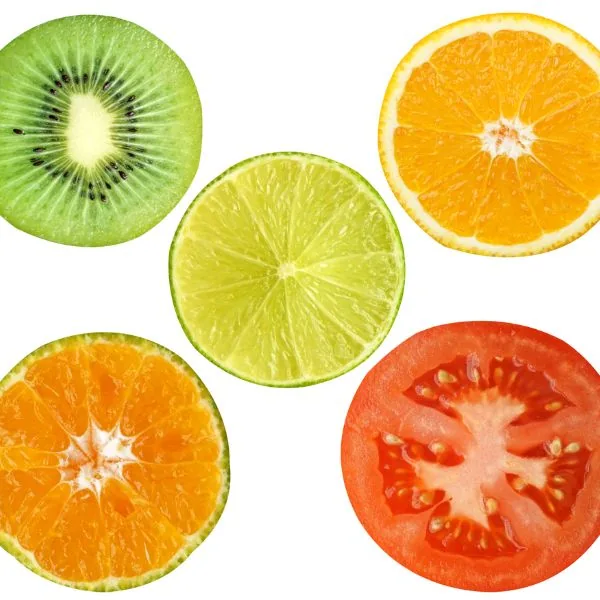
Preparation is an integral part of the dehydration process and plays a significant role in prolonging the longevity of dehydrated food. Every part of the process plays a part in successful dehydration and shelf life.
For example, when you want to thoroughly and quickly dry your food, cranking up the heat doesn’t make much difference. Instead, to guarantee even and thorough drying, you have to cut your food into thinner and smaller pieces to enhance its surface area during the prep process.
So, to make sure you always get it right here’s what you should always do:
- Wash fresh ingredients to remove dirt, debris, and other impurities
- Thaw frozen foods
- Cut, slice, or chop your food into uniform pieces to ensure even drying
- Treat your ingredients – although this may not be necessary for all ( For example, some fruits require soaking in ascorbic acid or citric fruit juices to prevent oxidation and browning while vegetables require steaming, blanching, or cutting to effectively pull out excess moisture and retain color)
Dehydrating Temperature Is Essential
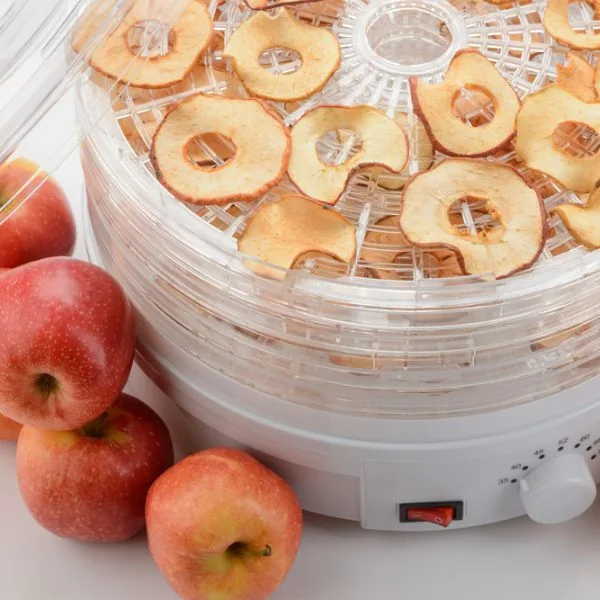
You have to set the dehydrator to the right temperature for the food you want to dry. For example, the meat will generally require a higher temperature compared to foods like fruits.
But, this doesn’t mean you can just crank up the heat. Doing so will simply toughen the outer skin and leave the interior full of moisture.
Now, with moisture remaining inside your food, it will not last you as long. Other foods like jerky which contains fats mean the fat breaks down faster, goes rancid, and becomes the ideal breeding ground for bacteria growth.
So, when dried under high temperatures, you will notice mold forming on your jerky within a few days.
Here’s a standard dehydrating temperature guide for different types of food:
- Fruits: 125 to 140 degrees Fahrenheit
- Vegetables: 140 degrees Fahrenheit
- Herbs: 95 to 110 degrees Fahrenheit
- Legumes (like beans): degrees Fahrenheit
- Pasta: 135 degrees Fahrenheit
- Grains: 110 to 115 degrees Fahrenheit
- Meat: 145 to 155 degrees Fahrenheit
- Fish: 145 degrees Fahrenheit
- Poultry: 135 to 140 degrees Fahrenheit
Moisture
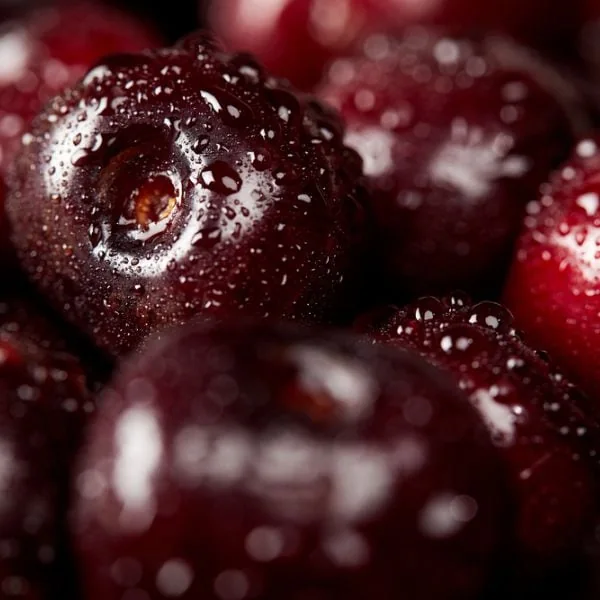
Moisture creates the ideal temperature for microbial growth, which causes food to go bad. You can also get food poisoning caused by salmonella or E.Coli due to the moisture on your food.
So, when dehydrated food contains moisture, the shelf life is usually compromised.
Different factors account for moisture buildup on and in the food. These include poor prep, wrong drying temperatures, lack of post-dehydrating conditioning, and even storage.
For dried food to keep for long, you have to ensure it is completely dry so that it can snap when bent before storing it away in an airtight container.
However, sometimes, even with the best practices, dehydrated food can still get wet over time. So, it’s a good idea to check your food from time to time and toss it into the dehydrator for re-drying when you notice any moisture (but no mold!).
Insect Infestation
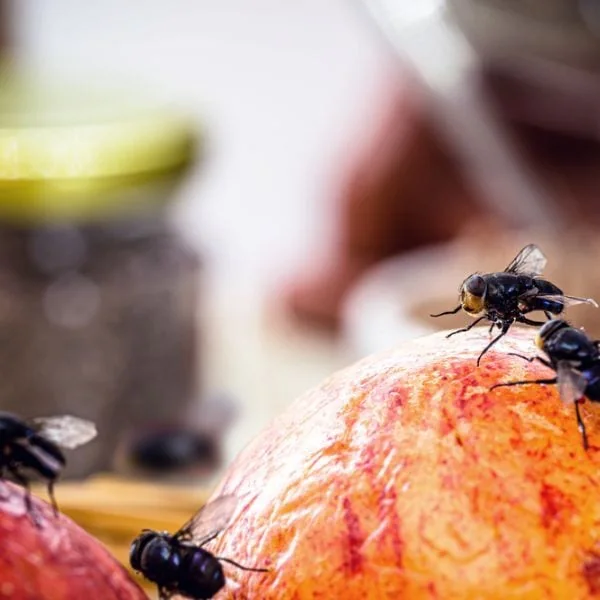
Insect infestation is also the enemy of your dried food. Small live insects love dried food and will easily infest it if it’s stored in a loose container, shortening the life span.
Further, if you don’t wash fruits or vegetables properly, you can still end up with an insect infestation because the drying process doesn’t kill insects.
So, in addition to washing your food, store it properly after dehydration. Some people even add oxygen absorbers into their containers for an extra seal.
Insects and larvae will not survive in an oxygen-deprived environment!
Nutrient Loss
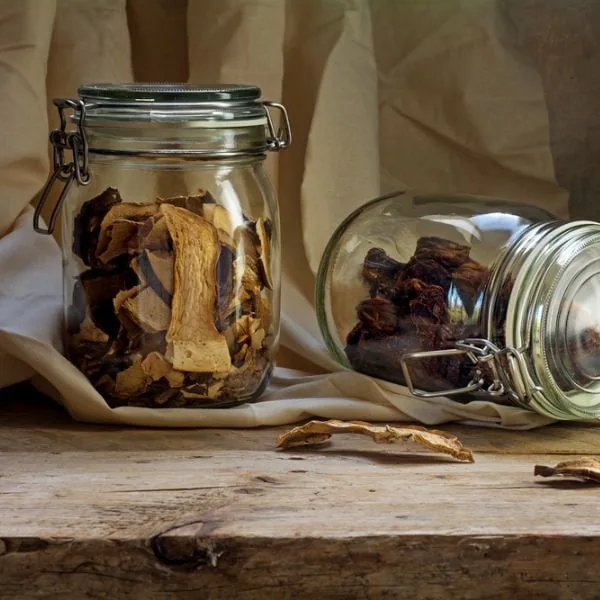
Even with the best prep, dehydrating, and storage practices, your food may still lose its shelf life over time. This is because the food will naturally lose its nutrients over time, although limiting light, oxygen, heat, and moisture slows the process.
But, with the use of preservatives, you can slightly add more months or years to the food. This explains why the food you dry at home may last you a year while the same store-bought dried food will keep good for up to five years.
Environment
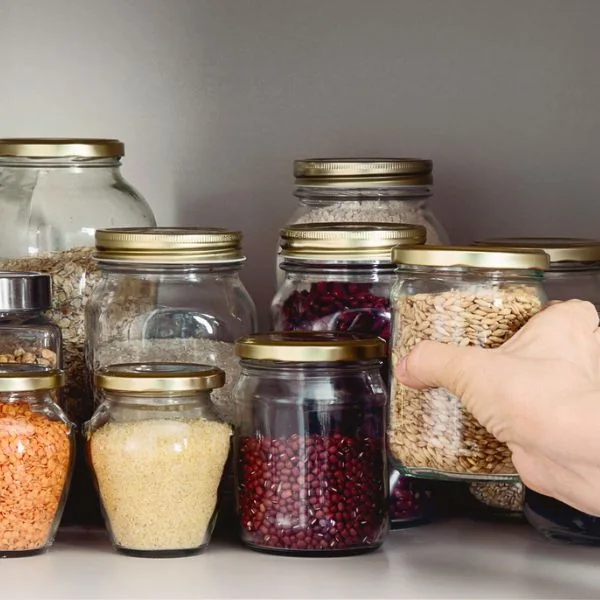
The environment also affects the shelf life of dried food. When food loses moisture during the dehydration process, it tends to act as a sponge.
Therefore, in the wrong environment, it can easily absorb what’s around, including odors.
So, you want to store it away from potential odor sources. For example, you want to keep away dried meats from fruits you store on your countertop, like bananas.
Over time, the meats absorb the aroma, making them unpalatable.
Doneness
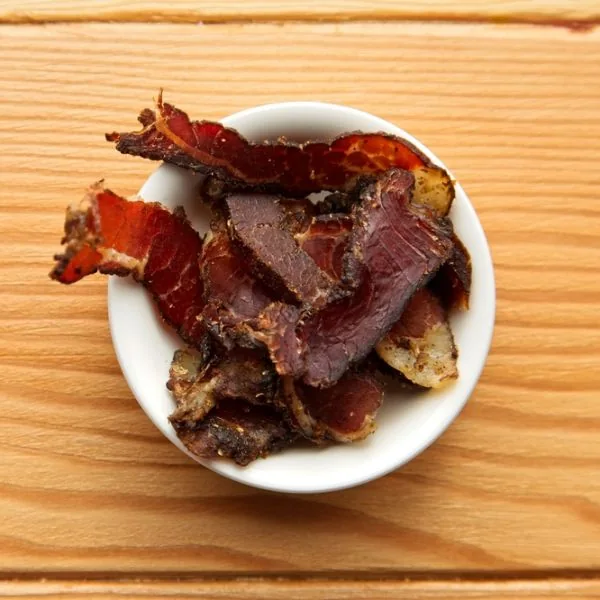
You have to learn how to tell when your food is dried enough. Fully dried food means that adequate moisture is drained from it, allowing it to last longer.
So, if your food is under-dried, you risk reducing its lifespan. Most adequately dehydrated food feels leathery and bends without breaking.
How Does Storage Affect the Longevity of Dried Food?
The storage of dry food plays a role in its shelf life. You have to consider how and where you store your food.
Storage Type
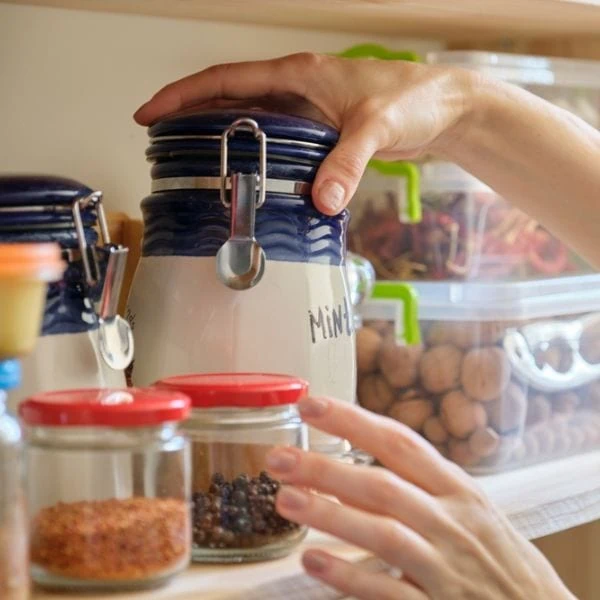
Dehydrated food will have varying shelf lives depending on how you store it. No matter the storage option you go for, you should also pack the food in the right volume, ensuring you don’t stack it too much.
This is because stacking the food can create an environment for moisture build-up. As mentioned before, dehydrated meats go bad the fastest, followed by vegetables and then, fruits.
Here’s how long you should expect dehydrated food to last in different storage options:
How Long Does Dehydrated Food Last If Vacuum-Sealed?
Airtight vacuum-sealed dehydrated food lasts the longest, between 5 to 10 years, if left unopened. You can vacuum seal your food in a can or put them in a vacuum-sealed bag.
However, in a bag, even the smallest punctures can impact your food’s shelf life as the hole allows oxygen to pass through. To reduce the effects of this problem, you can start by wrapping your food in parchment paper and then add it to the bag.
How Long Does Dehydrated Food Last In Mason Jars?
Dehydrated food should last about 6 months to one year in a mason jar of the right volume. Even mason jars advertised as being airtight are not truly airtight.
Further, if you open the jar from time to time to access the food, this contributes to reducing the shelf life.
How Long Does Dehydrated Food Last In Mylar Bags?
Mylar bags offer storage for dried food for anywhere between a year to ten years, depending on the type of bag you go for.
Opaque vacuum-sealed bags added with oxygen absorbers offer the best long-term storage option. A Mylar bag with a zippered top and a clear window will not last you as long as they allow some oxygen and light to penetrate.
How Long Does Commercial Dehydrated Food Last?
Commercially dehydrated food will last anywhere between three and twenty years. In addition to the immaculately sterilized storage containers, oxygen drain, and ultra-dried food, commercially dehydrated food contains industrial additives that extend its shelf life.
How Long Does Dehydrated Food Last In Ziploc Bags?
Dehydrated food will last about four to twelve months. Ziploc bags are not the best storage options for dehydrated foods.
However, they work great when you want to store small food quantities. Thicker freezer-type Ziploc bags are a better option for this type of storage.
Ziploc bags are also great for when you want to store your dehydrated food in the fridge or freezer.
How Long Does Dehydrated Food Last In Can?
With moisture and oxygen completely pulled out, dehydrated food can last up to 20 years in a can.
However, in practical terms, it typically lasts up to 5 years. Make sure your cans are thoroughly cleaned with warm water and soap and dried before storage to remove any impurities that may affect the food or promote microbial growth/insect infestation.
How Long Does Dehydrated Food Last In Fridge?
Dehydrated food in the fridge will last you about six months to a year as the cool air helps to slightly extend the shelf life. In a freezer, your food can last even longer.
Storage Location
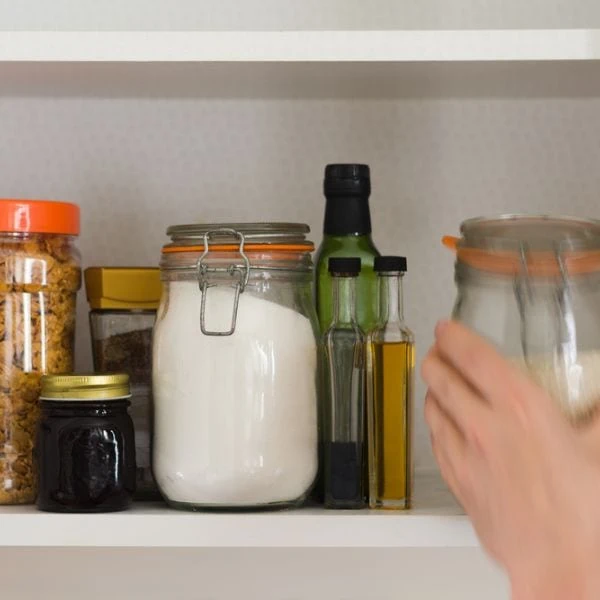
In addition to the storage vessel, the storage location plays an important role in extending your shelf life when dehydrating food.
You want to store dehydrated food in a cool, dark place with good airflow. Ideal places in your home include the kitchen cabinets.
Here’s how different environmental factors affect the shelf life of your food;
- Oxygen: Oxygen breaks down dehydrated food, impacting its flavor and shortening the life span. Use airtight containers and bags and/or oxygen absorbers to counter this.
- Light and heat: Light and heat break down the food and reduce flavors and nutrients while shortening the life span. Store your food in a cool and dark place to counter this.
- Moisture: Food should dry thoroughly and completely cool off before storage to prevent moisture build up.
Tips for Successful Food Dehydration and Food Preservation
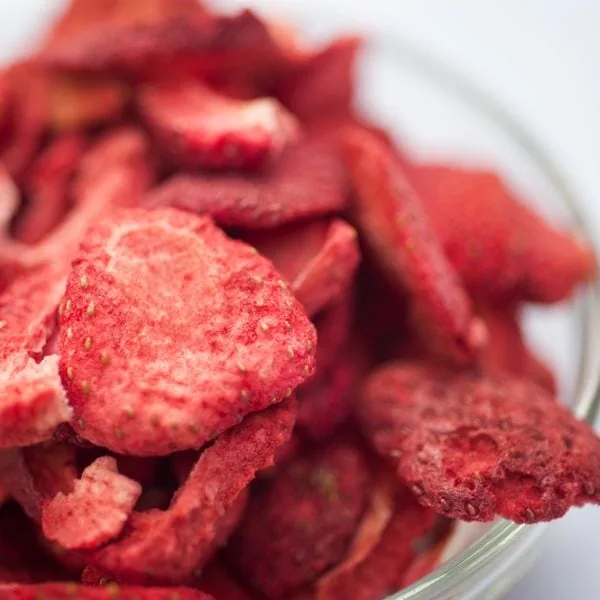
Here are tips for prolonging the longevity of home dehydrated foods;
Storage Tips
- Never skip the conditioning process when you remove your food from the dehydrator. Doing so will ensure you don’t find mold on your fruits or vegetables a week after dehydrating the food.
- Always store foods in smaller quantities to prevent moisture build-up. Storing in multiple bags/containers in smaller quantities reduces the frequency of opening the containers up. if you store everything in one large container, you will reduce the shelf life significantly since you have to open it more frequently to access the food.
- Avoid the misconception that powders last longer. In fact, their higher surface area means that they are processed the most and tend to lose their qualities much faster. So, only powder your spices and herbs as needed. Limited your usage cap to about two months per batch.
- Some people prefer to use oxygen absorbers or desiccants (silica gel or moisture absorbers) to prolong their food shelf life. But, you should never use the two together at any point – oxygen absorbers need moisture to work!
- Vacuum sealing is just as good as using oxygen absorbers and doesn’t add any foreign chemicals to your storage containers or packs. Plus, vacuum sealing doesn’t bring the risk of botulism as oxygen absorbers do for foods like tomatoes and raisins.
Other Tips
- You can always extend the lifespan of dried food. If you don’t mind adding additives, you can add items like sodium benzoate or sulfur dioxide to extend the shelf life of your food. Most additives will add at least six months to the shelf life of home-dried food.
- Dehydrate foods in season to not only save costs. Fresh foods are easier and best to work with, retaining more flavor, nutrients, and longer shelf life (they are not degraded).
FAQ
Does Dehydrated Food Go Bad?
Dehydrated food does go bad eventually. Dehydrated food doesn’t go bad as quickly as fresh food, but, over time, they do go bad.
Over time, dried food loses its flavor and nutrients and becomes more susceptible to factors like moisture, microbial growth, insect infestation, and mold.
How Long Does Dehydrated Food by the Air Fryer Last?
Food dried in an air fryer will last you between two weeks to eighteen months, depending on the type of food. Similar to dehydrated food, you want to pre-treat your food, dry it at the right temperature, and condition it before storage to guarantee long shelf life.
How Long Does Dehydrated Dog Food Last?
Like regular food, you should expect dehydrated dog food to last between four months and six months. Dehydrated meats will have the shortest lifespan while not meaty, non-fatty dog food lasts longer.
Are Moisture Absorbers/Desiccants Necessary for Dehydrated Food?
Not really. You can always ensure your food dries thoroughly and is conditioned before storage to equalize and minimize moisture build up.
However, if you live in highly humid conditions and store dried foods in non-vacuumed storage options, using moisture absorbers or desiccants may be a good idea.
What Type Of Dehydrated Foods Should I Refrigerate?
You can refrigerate most of the dehydrated foods. However, it’s usually unnecessary to store fruits, vegetables, grains, herbs, and similar ingredients in the fridge.
Alternatively, foods like jerky and foods that contain fats are better stored in the fridge to tame their high humidity levels.
Nonetheless, you still have to store dried foods in the fridge in an airtight or vacuum sealed container to prevent them from absorbing the moisture in the fridge and odors from fresh foods. You can also freeze your food in vacuum-sealed or airtight storage for an even longer shelf life.
But, you have to eat it as soon as you remove it from the freezer and thaw it. Ice crystals that form around the food during freezing melt and create moisture pockets when you remove the food from the freezer.
Over time, this may create the perfect environment for microbial growth.
Conclusion
Different types of dehydrated foods possess varying shelf lives. Nonetheless, the actual longevity of the food you dry at home significantly depends on how well you prepare it.
You have to ensure every step is immaculately executed, whether pre-treatment, dehydrating, conditioning, or storage. Furthermore, you always have to keep in mind the factors that affect food shelf life to hit the nail with the process.
You can always extend the longevity of your dried food by taking different routes. Perhaps the best way is to store your food in a vacuum-sealed or airtight container or bag and store it in a cool, dry, and dark place with optimal ventilation.
You can also add in oxygen absorbers, desiccants, or even artificial preservatives if you don’t mind using non-natural components.





Donaldina is a home cook and writer who enjoys experimenting with different flavors. She loves to take her readers on a fun-packed, palate pleasing journey through different recipes. Along the way she recommends the best equipment and tools to prepare tasty meals. Enjoy the adventure!